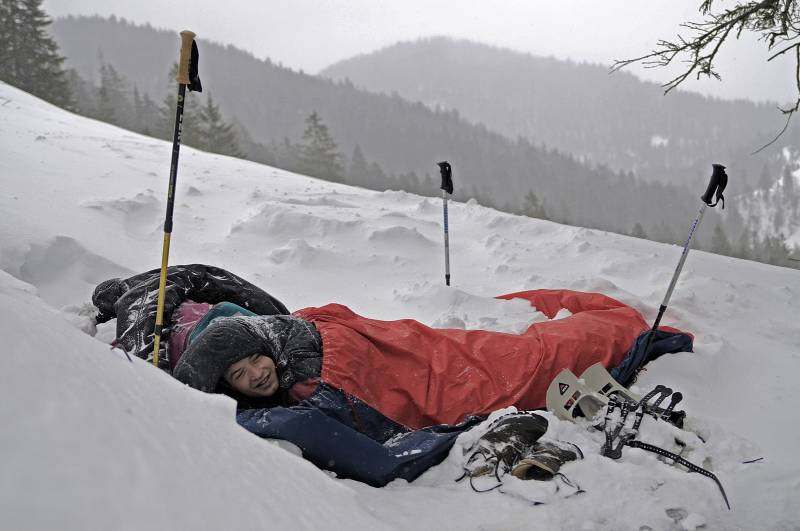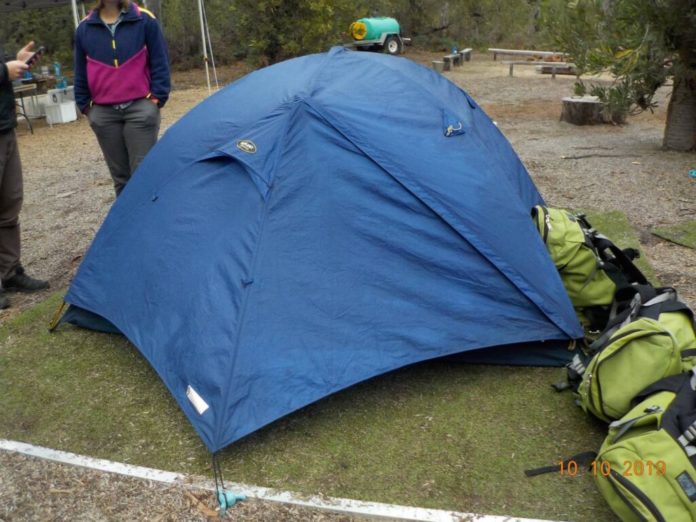You have to admit, folks who use outdoor gear regularly are definitely passionate about their choices, and one of the most spirited arguments in this category is on the subject of shelter. Bivies and tents are the two most popular outdoor shelter options available, and each has a legion of zealous fans that argue the merits of their choice over the other seemingly without end. This can make it easy for a beginner in the sector to wind up with a case of analysis paralysis.
Which is best between a tent and a bivy? Both are viable. The answer is whichever one better serves your purposes. Tents have the advantage in spaciousness but, they are somewhat bulkier and heavier than bivies. Bivies are just the opposite, lighter and more compact, but they are definitely cramped quarters on the inside. Either can keep the weather off of you, and help you keep warm and do it well.

Now, lest you think that is a cop-out answer given in an effort to get everyone to settle down and get along, we are prepared to go into more detail and a thorough analysis in the remainder of this article. Does one have an edge over the other? Is there one that is clearly superior for certain people? Find out below!
Bivies and Tents Compared
| Category | Tent | Bivy |
|---|---|---|
| Cost | Can be spendy, several hundred to over $1,000. | Significantly less expensive than tents of comparable quality, usually $200 or less |
| Setup | Multipart frames, ground covers and other requirements take time to assemble correctly. | Quick and easy to set up, usually 5 minutes or less. |
| Weight/Bulk | Can weigh several pounds. Frame adds weight and bulk. “Flyweight” tents can be expensive and fragile. | The choice for weight savings. Rarely weighs more than a couple pounds complete. Packs down small. |
| Space | Even small tents are spacious, allowing room to sit up, change and shelter your gear in addition. | Cramped, by design. Can feel claustrophobic. Very little room to spare if any. |
| Other | Tents are easy to seal against pests, especially insects, and have better ventilation than bivies most times. | Bivies suffer horribly from condensation, enough to soak you and your sleeping bag in the wrong conditions. Also highly permeable to pests compared to tents. |
Cost
Before you even get underway, one of the factors you should compare between tents and bivies is the cost. The old saying is that there is a shoe for every foot, and to us this means that there is a bivy or a tent for any budget, no matter how cheap.
While most of our readers don’t need me to warn them against purchasing any dedicated survival gear that is too cheap lest it fails to do the job they bought it to do, if you compare apples to apples a bivy will always be less expensive than a tent.
First, there is significantly less fabric needed to construct a bivy. They are much smaller and this means less material requirements. Much of the time this materials cost savings gets passed on to the purchaser.
Tents are larger, and also have multi-part and sometimes complicated frames as part of their construction in the bargain. As the features and options of a tent increase so too does the cost.
It is an easy thing to spend $400 or more on a decent, compact tent. A bivy of equivalent quality will usually cost less than $200. If you’re trying to survive on a strict financial budget, a bivy might well be the best option.
Setup
It is worth considering the setup time of your chosen shelter. Whether you are out on a pleasure hike or desperately trying to make tracks during a bug out you will have plenty to do and only a limited amount of daylight to get it done.
Anytime spent setting up or tearing down your camp is time that is not spent doing something else, such as resting, preparing food, reviewing your route or maintaining gear.
Typically there is no comparison between tents and bivies when it comes to setup and tear down time. Bivies, in accordance with their minimalist nature, can usually be set up and torn down then stowed in just a few minutes, with the majority taking less than 5 minutes to set up by a practiced person and many taking less than 2 minutes.
Tents on the other hand are a mixed bag. Modern tents designed with an eye towards user-friendliness often have just a few frame components that have to be snapped together before being inserted or otherwise attached to the tent shell itself.
Depending on terrain, practice and other factors this can take anywhere from 8 minutes to upwards of 15. Old fashioned or primitive tents can take significantly longer.
Weight / Bulk
So long as you are considering modern tents and bivies, the weight savings between the two might not be so substantial. Pretty much every bivy weighs less than a couple of pounds, and the best modern examples weigh just a scant few ounces.
For folks in the ultralight backpacking community or preppers who are counting every gram that they add to their bug out bags, a bivy is probably going to be the winner based on weight savings and lack of bulk alone.
Modern tents can be quite lightweight also, weighing as little as a few pounds, but it is the frame that so often dramatically increases weight and bulk. This might not make one lick of difference to you if you are traveling by vehicle, but when you have to carry it you’ll be paying a lot more attention, I promise.
Nonetheless, modern, synthetic tents are feathery light, and combined with alloy or synthetic frame members your whole tent might weigh only five to ten pounds. Old fashioned canvas tents, however, can weigh a ton and weigh even more if they get wet.

Space
There is no contest here; even the smallest tent affords far more room to maneuver than any bivy. A compact tent will still allow you plenty of room to sit up, bring your pack inside with you and even wriggle out of wet or dirty clothing before changing with privacy, assuming you are camping among other people and not in the middle of nowhere.
It is also just plain nice to have a little extra room to breathe without the walls closing in on you! Larger tents can sleep multiple people, even a whole family, with no problem.
Bivies, on the other hand, are by design as compact as possible, barely containing enough room to hold a sleeping bag with a slightly larger, flared end that gives you a little bit of headroom and not much else.
This is a double-edged sword, as we will discuss, but considering creature comfort some folks suffer from a feeling of claustrophobia inside of bivy, and those people who suffer from genuine claustrophobia often have a hard time getting comfortable and nodding off to sleep.
If you need additional room for any purpose, and especially for bringing your gear inside with you to keep it out of the elements, a tent is pretty much your de facto choice. The bivy has many other advantages, but they might count for nothing if they don’t afford you enough space to get meaningful rest or do the other things you need to do.
Other
A couple other things to think about. Bivies have a major weak spot in that they are notorious for accumulating condensation which will then drip, drip, drip down onto your face, onto your sleeping bag and elsewhere generally driving you crazy and soaking your gear.
Aside from being a Grade Five pain in the ass, you then have to deal with the problem of wet, soggy gear and either drying it out or packing it up and risking mildew. Tents are much better in this regard owing to their larger internal volume and better ventilation.
Speaking of ventilation, tents are easier to seal up against intruders of the insect and mammal variety.
Anybody who has ever gone out properly camping deep in nature knows that the profusion of insects and other inquisitive creatures is far, far greater than you could expect from your local KOA or any residential setting.
The zippered door or flap of a tent allows you to easily close off the interior against intruders. Bivies, on the other hand, are very difficult to seal in a meaningful way, and that means you’ll always have to contend with insects getting in and the occasional reptilian or mammal visitor looking to get warm.
Conclusion
Is a bivy or tent better for you? That is up for you to decide, reader, but we have laid out all the factors you need to consider.
Generally speaking, the bivy is best for someone who is on a budget but still needs an outdoor shelter or someone who wants the lightest and smallest possible package at the expense of creature comfort.
A traditional tent is better for those who need more room and don’t want to struggle so much with the aggravation of a bivy at the expense of carrying around a bulkier, heavier package that is slower to set up and take down.


